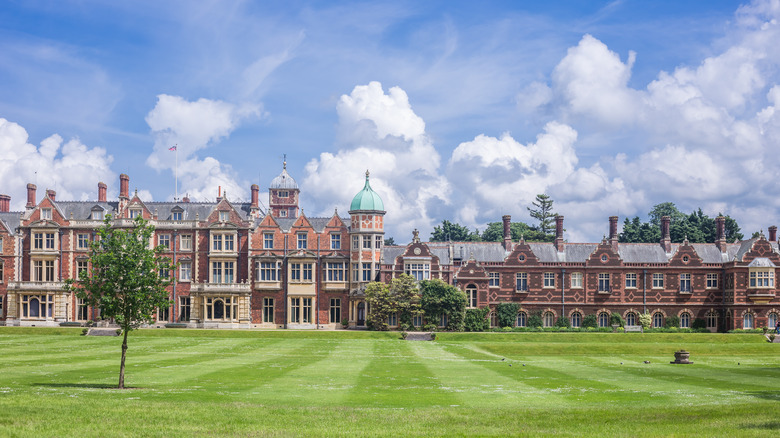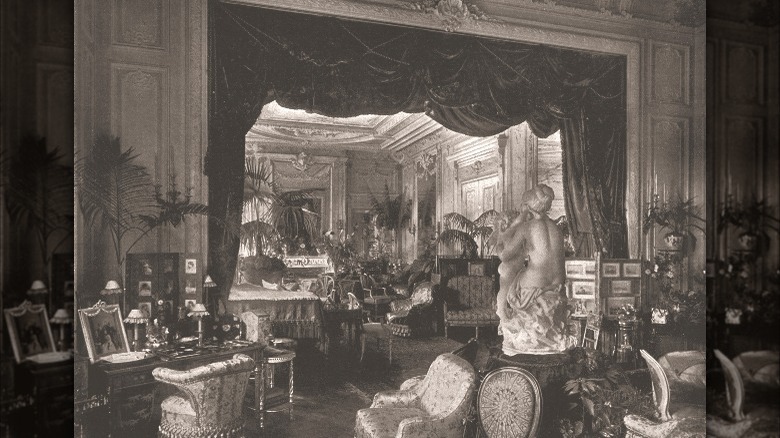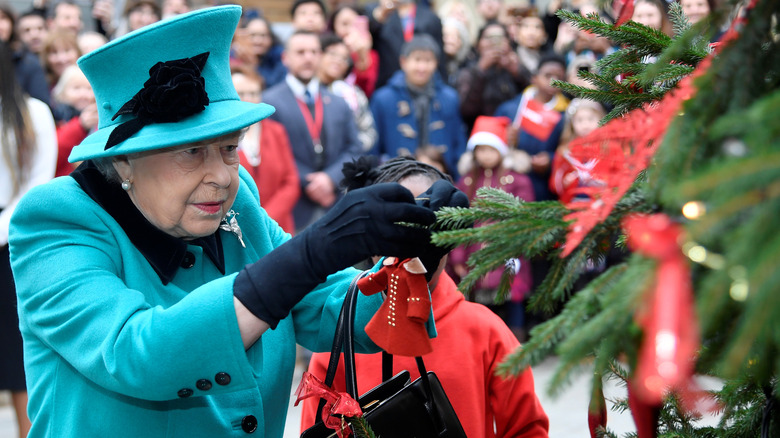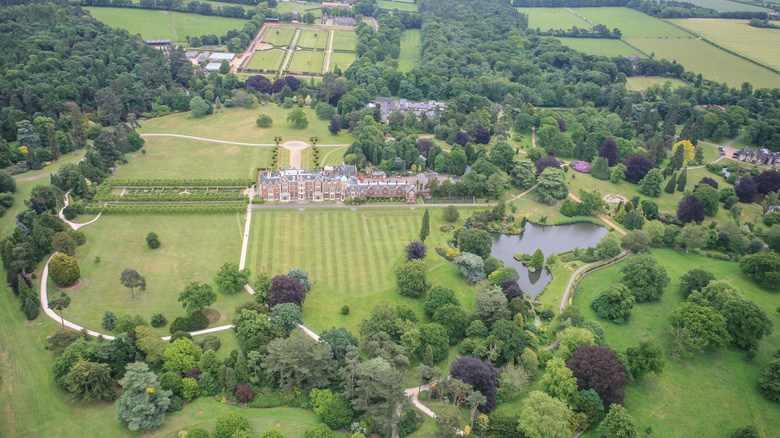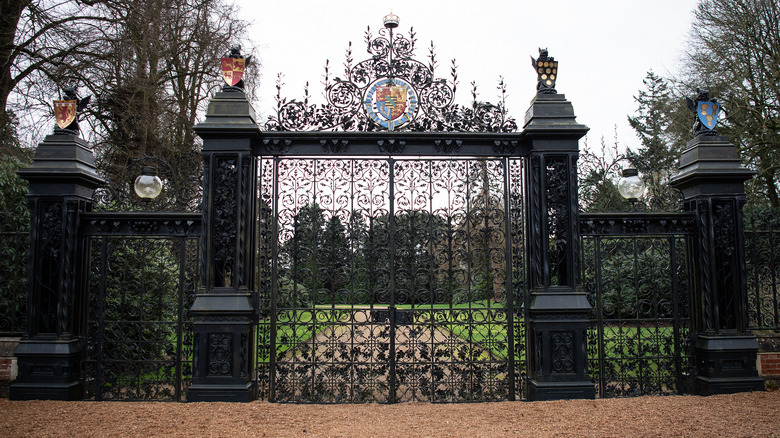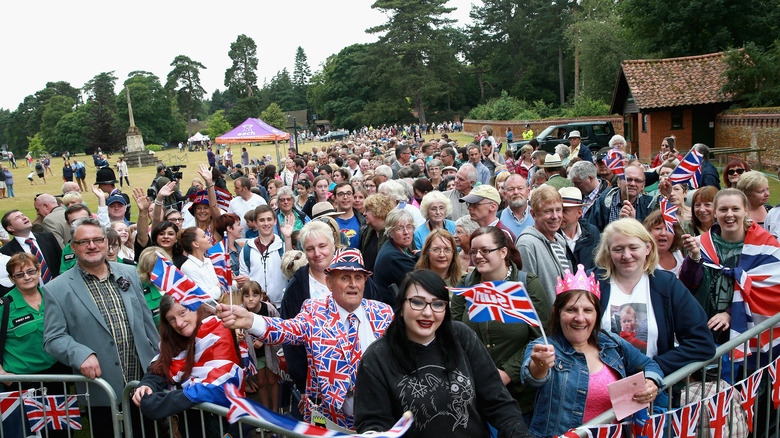Sandringham Estate: The Untold Truth Of The Queen's Country Home
Sandringham Estate is a property located in Norfolk, England. It's owned by the royal family and known for serving as Queen Elizabeth II's country home. The property spans almost 20 acres, but it came from humble beginnings. According to Historic Houses, there was evidence that a house was built on the location as early as the late 13th century. Records show that the families that lived there were the Cobbes and Hostes before it became royal property.
In 1862, Queen Victoria purchased the Sandringham Estate for the price of £22,000 for her eldest son — Albert Edward (King Edward VII) — and his soon-to-be wife. Back then, per the Royal Household, Albert Edward resided at the Malborough House located in London. However, it was decided that the prince should also have a country house away from the city. There was an existing house on the property that was demolished, and a Georgian-style structure was built in its place. The prince and his wife — Princess Alexandra of Denmark — moved into Sandringham soon after their marriage in 1863.
Fire destroyed parts of the home
Prince Albert Edward and Princess Alexandria needed more space at the Sandringham Estate to accommodate their growing family. New additions were added to the home, such as rooms and buildings. The new structures were conceptualized by A.J. Humbert and were inspired by the Jacobean style. Construction was completed in 1871, and in the decades following, more features were added, including several guest rooms and a ballroom (via Architectural Digest).
In November 1891, a fire broke out in Sandringham Estate. There were preparations going on for the prince's 50th birthday when the fire started. As reported by the Royal Household, the fire completely decimated 14 rooms located on the higher levels of the home. In addition, the lower levels were also damaged by water. A series of renovations took place to restore the house to its glory, and more bedrooms were added to Sandringham. King Edward VII died in 1910, and the property was passed down to his son, King George V. Through the years, the house was passed down to generations of royals until it was inherited by Queen Elizabeth II in 1952.
It's known as the Queen's Christmas home
Since 1870, it has been a tradition for the royal family to spend the Christmas holidays at the Sandringham Estate. A Christmas luncheon is typically celebrated at the Buckingham Palace, but the Windsors travel to Sandringham to have a three-day celebration, per The Washington Post. The family attends service at the church located on the estate grounds, and a meal follows.
Gift-giving among family members is also something fun to look forward to, especially when Queen Elizabeth II started a tradition of giving each other gag gifts. As reported by Best Life Online, it was done to get rid of the pressure of having to find the perfect gifts for each other. The exchanging of gifts takes place in Sandringham's Red Drawing Room after afternoon tea. Through the years, there have been reports of the gifts that have been exchanged including a pair of slippers with the queen's face given by Prince William to Queen Elizabeth II, a leather toilet seat Princess Anne gifted Prince Charles, and a shower cap for the queen given by Prince Harry (via Hello Magazine).
Sandringham is a working farm
With such a large expanse of land, it's no surprise that Sandringham Estate has its own working farm that grows a variety of organic crops. Additionally, the farm also has livestock and several fruit-bearing trees, such as apples, pears, and plums, according to Sandringham Estate. The estate reportedly employs more than 200 people — gardeners, farmers, and gamekeepers — to manage the facilities and the produce.
Sandringham Estate is also big on conservation. Throughout the years, various efforts have been made to maintain the environment in order for plants and animals to thrive. More than 2 million trees have been planted on the land since 1952, and new hedges are also planted each year. The property also consists of about 500 acres of uncultivated land that is maintained. In addition, the entire Sandringham Estate is strict on recycling materials, such as paper, glass, metals, and food waste.
You can rent a home at the estate
Sandringham Estate consists of 13 villages that have more than 300 properties for rent. The houses are targeted toward long-term renters who must stay for a minimum period of a year. The properties also come unfurnished, so renters can choose to decorate the interiors as they please. In addition, there are also agricultural properties available for those who are interested in the business, as reported by Architectural Digest. However, renting properties is not as easy as filling out a form. The estate does not rent out based on who reserves a property first; rather, potential renters are first screened and are chosen based on whoever is most suitable for the property. Potential tenants who have pet cats are automatically out of the running, as Sandringham Estate has a no-cat policy, while those with dogs may be considered, depending on which house they want to rent.
Various events for the public are held at Sandringham Estate
Sandringham Estate is open for tourists, but they also hold several events that can be fun for the entire family. One activity available is the Safari Tour that takes visitors around the estate to see the marvelous scenery and explore the wildlife while aboard a Land Rover. There are also festivals where there are stalls that offer food, crafts, produce, and wines. Those who want to have a relaxing afternoon, on the other hand, can have tea at one of the estate's restaurants (per Sandringham Estate).
There's always something new to experience when visiting Sandringham Estate. They offer an annual membership that comes with perks, such as discounts on catering outlets, priority booking, discounts for guests of the membership holder, as well as unlimited access to the estate's garden. The membership costs £45 (about $60) and is valid until a year after the purchase date.
